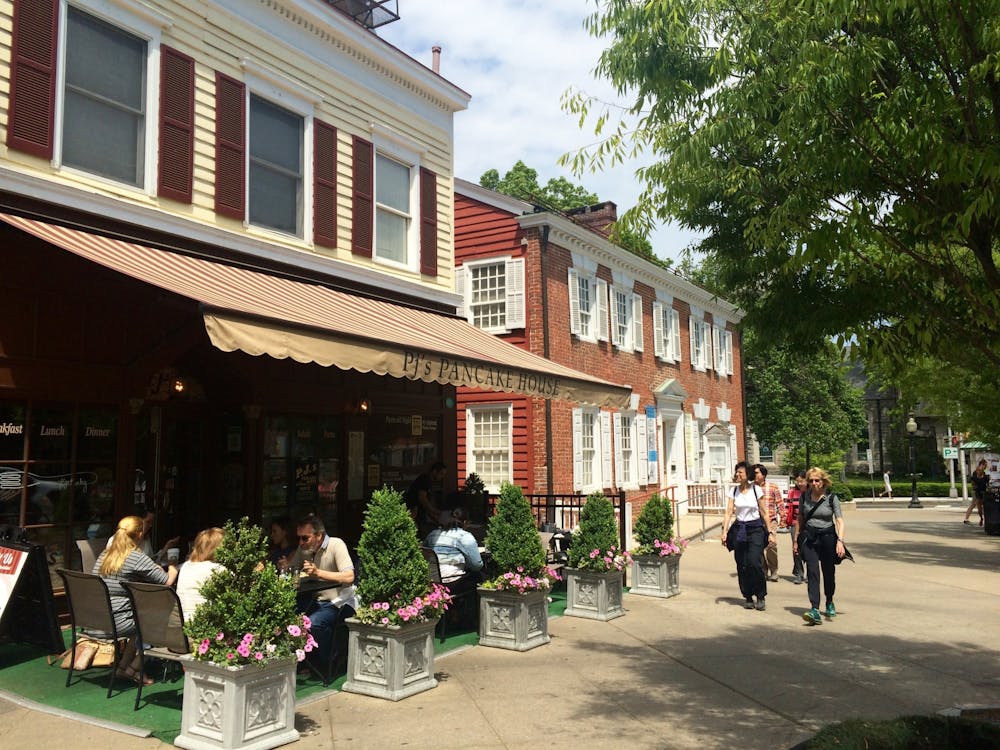The argument of this week's column begins with a story.
I am currently enrolled in AST 203: The Universe, like many other arithmetically-challenged humanities' students whose interest in quantitative reasoning is somewhat minimal. Last Tuesday, Professor Patterson presented an opportunity to his students:
"Tonight," Patterson said, "this class will be hosting a play-reading of Bertolt Brecht's 'Galileo.'"
As a student of drama, I clearly have my prejudices, but nevertheless — that a scientist such as Professor Patterson would think to use a work of drama (especially one by as preeminent a force in 20th century dramaturgy as Brecht) for pedagogical purposes seemed unimaginable and exciting to me.
"How many of you would be interested in attending?" Professor Patterson asked.
A palpable silence fell over the lecture hall.
To tell the truth, I have no idea how many students are in AST 203. There must be about five hundred. However many were assembled in the lecture hall that day, only three or four hands were raised. The only other motion at the moment was a sort of awkward squirming and the constant shifting of eyes to see who was, in fact, offering their interest.
"Not very many, huh?" Professor Patterson asked.
"There's a big basketball game tonight," someone shouted from the other side of the hall.
Other voices murmured their assent.
"Oh, then perhaps we could move the reading to Thursday night?" Professor Patterson asked.
To this, his audience burst into a fit of laughter. Attend a play reading on a Thursday night? Laughable!

No critique of the state of the arts at Princeton University would be complete without at least a cursory investigation into the antipathy with which much of the undergraduate population views art and artistic endeavors.
Evidence of this antipathy can be found easily enough: one need look no further than the paper in which this column is running. The fact that every issue of The Daily Princetonian includes a sports section that takes up half of the entire paper speaks volumes about the 'Prince's' readership. Only once a week does the paper devote any page space to the arts. Please don't misunderstand: I'm not criticizing the 'Prince' for what it chooses to publish (why bite the hand that feeds me?), I'm only suggesting that one can infer a great deal about the interests and priorities of Princeton undergraduates by noticing what kinds of articles they enjoy reading. Princeton students enjoy reading about sports; they want to read about sports every day. The arts are of ancillary concern.
And why not? Most people would rather spend their weekends and the little free time they have out at the street anyway, wouldn't they? Who wants to attend an orchestra concert when there's pre-gaming to be done? Why watch a play when you could play Beirut?
In general, I find that (prepare yourself for what will surely read as little more than an insupportable pronouncement and nothing less than sheer unbridled snobbery) many Princeton students are, for the most part, uninterested in the state of the arts at Princeton. This raises two questions.
First, should we, as artists, be concerned by what seems to be an overwhelming apathy toward art? After all, the unabashed aversion to all things artistic, which is so rife in Princeton's undergraduates, extends beyond the Princeton bubble to the rest of our world. Surely, in modern society, there are a lot more people who would rather go to a football game than to the opera. Should this be a cause for alarm? It shouldn't, if we are to follow the logic of Tom Hale '04, who in his 'Prince' article on Feb. 4 implicitly defended the existence of Bicker by gesturing toward the way in which "[t]he adult world also has its share of exclusive organizations." While Hale went on to confess, "Just because selective social organizations are prevalent in society does not mean that they are appropriate or desirable for what should be a close-knit campus community," he concluded with the words "It is good to remember that in some ways Princeton is not so different from the rest of the world after all." Is this the kind of logic we ought to apply to all social "ills" at Princeton? Okay, so there's not an overwhelming amount of interest in art on campus, but then again, there's not an overwhelming amount of interest in art in the rest of the world. Should we just shrug our shoulders and say, "That's the way things are"?
The other question I want to ask is this: What are we, as artists, doing to make our art something worthy of greater attention?
I recently attended my first squash match and found myself totally engrossed within minutes even though I didn't have the slightest clue as to how squash was played. There is something about squash – or tennis, or baseball, or any sport for that matter – which appeals to a person on a truly fundamental level, which demands that the spectator have a stake in the action. I would argue that there is something intrinsically and personally engaging about football that enables the football team to pack the stadium for every home game. There are scores of people across the globe that love football if only for its entertainment value. The question I would pose is this: Why can't our art possess this captivating quality? What more can be done to make our peers want to attend arts events? What steps are we taking to make people want to experience our art?







